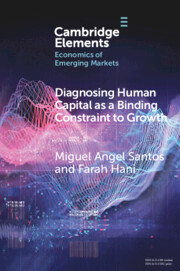Element contents
Diagnosing Human Capital as a Binding Constraint to Growth
Published online by Cambridge University Press: 25 November 2021
Summary
- Type
- Element
- Information
- Online ISBN: 9781108975223Publisher: Cambridge University PressPrint publication: 16 December 2021
References
- 13
- Cited by



